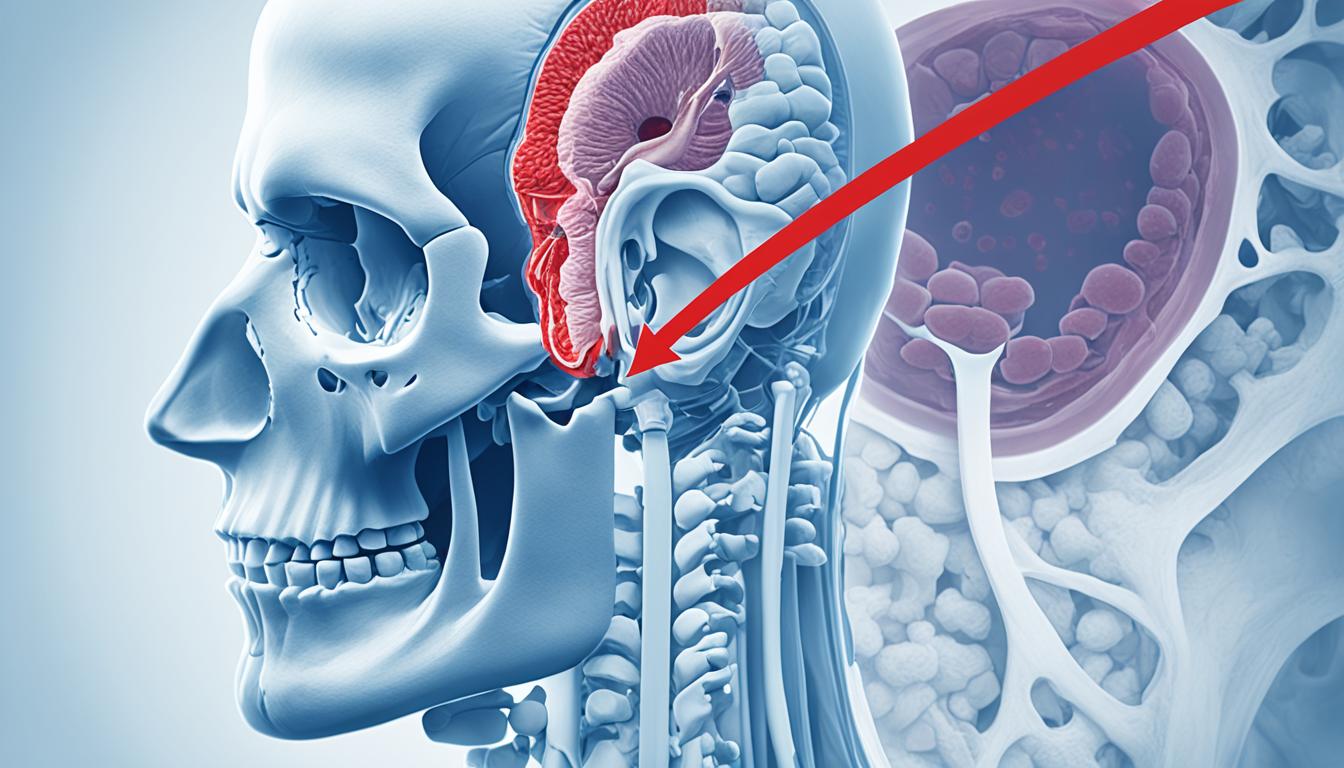Salivary gland tumors are a broad group of growths. They can happen in several areas, like the parotid or submandibular glands. The World Health Organization says there are 11 known benign types. Some well-known types are pleomorphic adenoma and Warthin’s tumor. We aren’t sure what exactly causes these tumors. But, things like radiation, smoking, viruses, and a person’s genes may play a part.
These tumors are more common in women, especially in the parotid gland. To diagnose them, doctors look closely at a patient’s symptoms, use imaging tests, and might do a biopsy. The main treatments are surgery to remove the tumor, radiation, and sometimes using stem cells.
Key Takeaways:
- Salivary gland tumors can occur in various glands in the head and neck region.
- Common benign subtypes of salivary gland tumors include pleomorphic adenoma, Warthin’s tumor, and myoepithelioma.
- The exact cause of salivary gland tumors is unknown, but factors such as radiation, smoking, trauma, viruses, and genetics have been linked.
- Diagnosis of salivary gland tumors involves clinical evaluation, imaging studies, and histopathological examination.
- Treatment options for salivary gland tumors include surgical excision, radiation therapy, and stem cell therapy.
Symptoms and Diagnosis of Salivary Gland Tumors
Salivary gland tumors show different symptoms based on their size and where they are. You might notice a lump, swelling, or a part of your face not working well. Other signs can be pain, trouble talking or eating, and changes in how food tastes. If you experience these, see a doctor right away.
Finding out you have a salivary gland tumor involves many steps. A doctor starts by talking to you and looking at your medical history. They then check you over, focusing on your head and neck area. This exam helps spot any signs of a tumor.
Imaging tests like ultrasound, CT scans, or MRIs are also key. They create pictures that show the glands in detail. Doctors use these to understand the tumor’s size, where it is, and what it’s like. This info guides the next steps in treatment.
Doctors also need to check a small piece of the tumor under a microscope. This is usually done by taking a little tissue sample in a biopsy. Fine-needle aspiration cytology (FNAC) is a common way to do this for salivary tumors. A pathologist then studies the tissue to figure out the tumor’s type and how severe it is. This helps plan the best treatment.
It’s very important not to ignore the signs of a salivary gland tumor. Getting diagnosed early is critical for good treatment. It’s a team effort from doctors who look into your history, examine you, and do tests on your tissues. This approach ensures you get the care you need to fight the tumor.
Treatment Options for Salivary Gland Tumors
Doctors choose the right treatment for salivary gland tumors based on many details. These include the tumor’s type, where it is, its stage, and its grade. Surgery to remove the tumor is the main treatment. It’s done to take out the tumor and some healthy tissue around it. The size and place of the tumor decide how much tissue needs to be taken out. This surgery can get rid of the tumor and stop it from coming back.
Sometimes, after the surgery, doctors suggest radiation therapy. This treatment aims high-energy beams at the area where the tumor was. It’s to make sure any tiny bits of the tumor left are destroyed. This lowers the chance of the tumor coming back and makes treatment more successful. Radiation therapy is especially helpful for large tumors or those in hard-to-reach spots.
Recently, using stem cells to treat these tumors has become an exciting idea. Stem cell therapy means putting new stem cells into the damaged salivary glands. These new cells can help the tissue grow back and get the gland working normally again. Stem cell treatment is still being tested, but it looks like it could really help improve the lives of people with these tumors.

